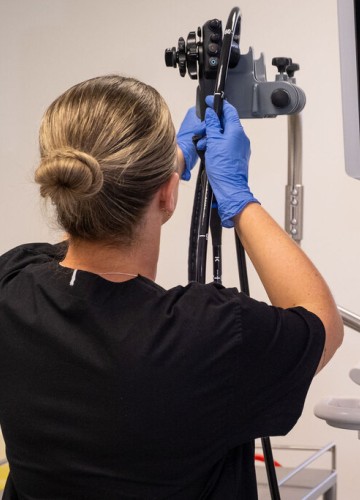Home / Procedures & Investigations / Colonoscopy
Colonoscopy
Colonoscopy is an examination of the inside lining of the large bowel (rectum and colon). It is a safe and effective procedure used to investigate bowel symptoms, detect inflammation or polyps, and support early detection of bowel cancer.

What is involved with a colonoscopy?
During a colonoscopy a long flexible digital camera (the colonoscope) is passed in through the anus and moved around the colon.
The picture from the digital camera is shown on a video screen so that your specialist can see the lining of your large bowel.
If necessary, polyps can be removed through the scope. Tissue samples (biopsies) can also be taken during the procedure.
Colonoscopy is the most accurate way of examining the inside of the large bowel. It can be useful to:
Investigate symptoms such as diarrhoea or bleeding from the bowel
Screen for bowel cancer, particularly for those over 50 or with a family history of bowel cancer
Look for more polyps for people who have had them removed before
Assess the bowel for people with long-standing bowel conditions such as inflammatory bowel disease
The Examination
The examination is an outpatient procedure. It usually lasts 20 to 45 minutes.
Our team of specialists and nurses are very experienced at conducting colonoscopy. They will answer any questions that you have about having a colonoscopy and will make sure that you are safe and comfortable throughout your procedure.
Step 1
When you arrive for your colonoscopy you’ll be asked to change into a hospital gown. Once changed you’ll be brought into the endoscopy suite.
Step 2
Your specialist will offer you some sedation. Sedation helps to make sure you are comfortable throughout the procedure. You may choose to have your colonoscopy without any sedation. Please discuss this with your specialist.
Step 3
You lie on your left side for the examination. You may be asked to turn onto your stomach or right side. This can help to scope to move through the bowel more easily.




